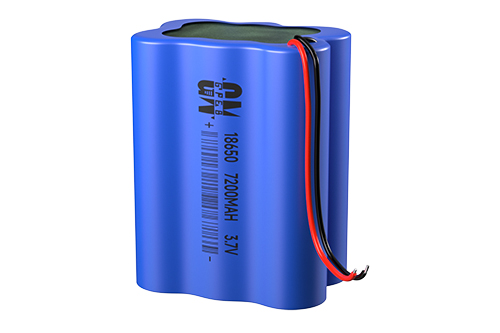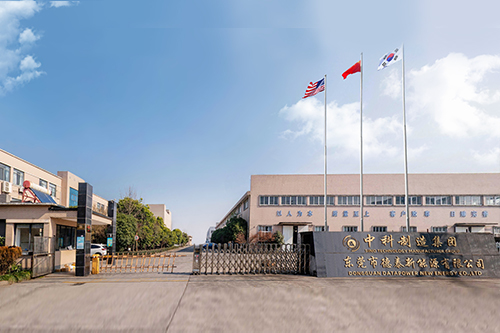Traditional lithium-ion battery materials are mainly lithium-containing
transition metal oxides. Their capacity mainly depends on the number of
electrons released by the transition metal elements during the redox process.
Taking the traditional LiCoO2 material as an example, it can be completely
delithiated. Transferring 1 mol of electrons, the molecular weight of LiCoO2 is
97.8g/mol. According to the formula C0=26.8n/M, the theoretical capacity of
LiCoO2 material can be calculated to be 273.8mAh/g. In other words, the key
factor that limits the capacity of the cathode material is how Provide more
electrons. Since the electrons that transition metal elements can provide are
limited, can the O element among them provide some electrons? In fact, in
lithium-rich materials, the O element is very easy to lose electrons and be
oxidized during the charging process, but the resulting capacity is often
irreversible. This is mainly because the oxidized O atoms are often eventually
converted into O2 and lost. If it falls off, it will cause an irreversible phase
change in the lithium-rich material.
From the above description, it is not difficult to see that allowing O
elements to participate in the reaction of lithium-rich materials can provide
1-2 additional electrons, thereby doubling or even tripling the capacity of
lithium-rich materials. However, the stability problem of O needs to be solved
to prevent O2- from transforming into O2, resulting in capacity loss. Recently,
Chun Zhan and others from Argonne National Laboratory in the United States
discovered through research on the reaction mechanism of Li5FeO4 material that
controlling the charging voltage of the material below 3.8V can achieve
reversible oxidation of O2- without releasing O2, and it will Suggestions are
made to further improve the stability of Li5FeO4 materials.
Generally speaking, although the theoretical capacity of Li5FeO4 material
is as high as 700mAh/g, it is difficult to be used as a cathode material due to
its poor reversibility. However, some people have taken full advantage of the
low reversible capacity of Li5FeO4 material and used it as a cathode lithium
supplement material. , significantly improving the first efficiency of
lithium-ion batteries.
As a cathode material, Li5FeO4 material must solve the problem of low
reversible capacity, which requires understanding its phase transition mechanism
during the charging process. Figure a above shows the crystal structure of the
Li5FeO4 material. Figure b shows the first charge and discharge curve of the
material. It can be seen that during the first charging process, two voltage
platforms will appear near 3.5V and 4.0V, and during the discharge process These
two platforms disappeared, and two very narrow voltage platforms appeared near
2.2V and 1.5V, which indicated that the material underwent irreversible phase
changes during the charge and discharge process. XRD analysis restored the phase
change process of the Li5FeO4 material during the charging process. After the
Li5FeO4 material sheds 2 Li+ at about 3.5V, the crystal structure of the Li5FeO4
material changed from the anti-fluorite structure to the disordered rock salt
structure, and continued charging to 4.0V. Nearby, the number of Li+ removed
reached 2-2.5, and the disordered rock salt structural phase continued to grow.
When charging continued, the number of Li+ removed continued to increase, and
the disordered rock salt structure began to disappear, eventually transforming
into an amorphous state, and the XRD diffraction curve also transformed into A
smooth curve with all the characteristic peaks gone.
High-resolution transmission electron microscopy pictures show that when
not charged, the Li5FeO4 material is a particle with good crystallinity with a
diameter of about 1um. However, after charging, the large particles are
transformed into small particles with a diameter of about 10nm.
Using XANES to analyze the valence state of the Fe element during the
reaction, it can be found that when charged to 3.5V, the Li5FeO4 material takes
off two Li+, and Fe3+ transforms into Fe(3+x)+ (x is about 0.5), which shows
that Li5FeO4 There are other elements in the material participating in the
reaction, otherwise the valence of Fe should increase by 2 at this time. During
the further charging process, the valence state of Fe element did not increase,
but decreased, which also shows that other elements in the material have
undergone oxidation reactions (in addition to Fe element, only O element can be
oxidized in Li5FeO4 material. ). Analysis of the gas generated during the
charging process also shows that the O element participates in the reaction
during the charging process. When around 3.5V, the air pressure increases
slightly. When charging to 4.0V, the air pressure will increase rapidly. DEMS
data shows that each electron results in the release of 0.1 O2 at the 3.5V
platform, but at 4.0V, each electron results in the release of 0.3 O2.
After analysis, Chun Zhan believes that the reaction of Li5FeO4 material to
release four Li+ is as follows:
Calculation found that when the Li5FeO4 material is charged to 3.5V, part
of the O2- will be oxidized to O-, and one O- will form a Li6-O spatial
structure with 6 Li+. When the Li5FeO4 material is further charged, this part of
the O- will be further oxidized to O0. , causing the entire reaction process to
become irreversible. In order to ensure the reversibility of Li5FeO4 material,
its charging voltage must be limited. The picture below shows the charge and
discharge curve of a battery that is cycled with the charge and discharge
voltage limited to 1-3.8V (the Li5FeO4 material only releases two Li+). It can
be seen that almost no gas is produced at this time, but the charging voltage is
increased to 4.0V. , a large amount of gas will be produced. When the charging
voltage is limited to 3.8V, relatively stable cycle performance can be obtained,
but charging to 4.7V will seriously affect the cycle performance of the
battery.
The phase change of Li5FeO4 material during the charging process is shown
in the figure below. When the charging voltage is controlled at 3.8V, part of
Fe3+ and O2- is reversibly oxidized into Fe4+ and O- during the charging
process. When further charging, O- It will be further oxidized to O0, thereby
producing O2, causing irreversible loss of capacity.
Chun Zhan's research work has given us a deep understanding of the working
mechanism of Li5FeO4 materials, and also allowed us to adjust the use of Li5FeO4
materials according to different uses. For example, when used as a lithium
supplementary material, the charging voltage can be increased to above 4.0V. ,
allowing the Li+ to be fully released, and making the Li5FeO4 material inactive
and no longer participating in subsequent reactions. If Li5FeO4 material is used
as a cathode material, the charging voltage needs to be controlled below 3.8V to
prevent O- from being further reduced to O0, resulting in irreversible capacity
loss. It also points out the direction for the subsequent development of Li5FeO4
materials with better stability - how to stabilize the Li6-O structure in the
material and further improve the capacity and cycle performance of the
material.
Read recommendations:
No.2 card-mounted carbon battery R14
What are the basic contents of lithium battery manufacturers' smart batteries?CR2032 button cell bat
High-efficiency solar cell growth soars; conversion technology is key
14500 battery manufacturer
1800mah 18650 battery











































 360° FACTORY VR TOUR
360° FACTORY VR TOUR
 Whatsapp
Whatsapp
 Tel
Tel Email
Email TOP
TOP